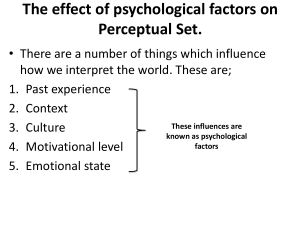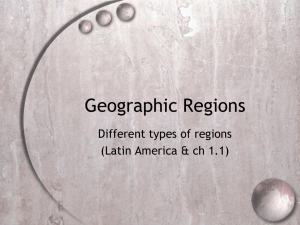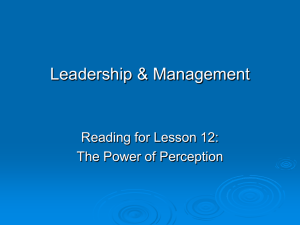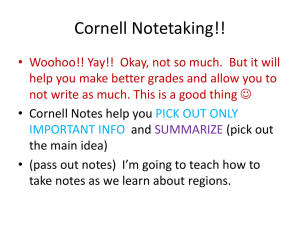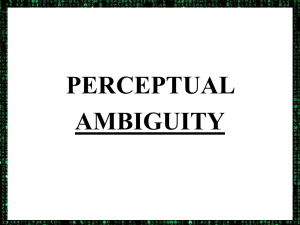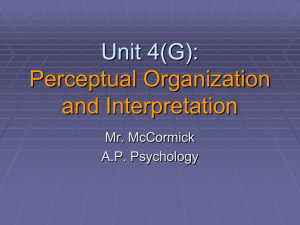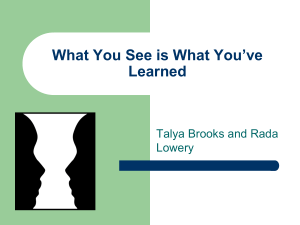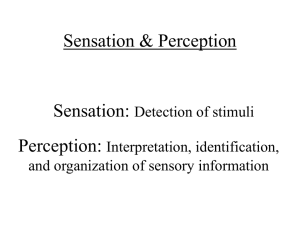Depth Perception: Visual Cues & Illusions in Psychology
advertisement
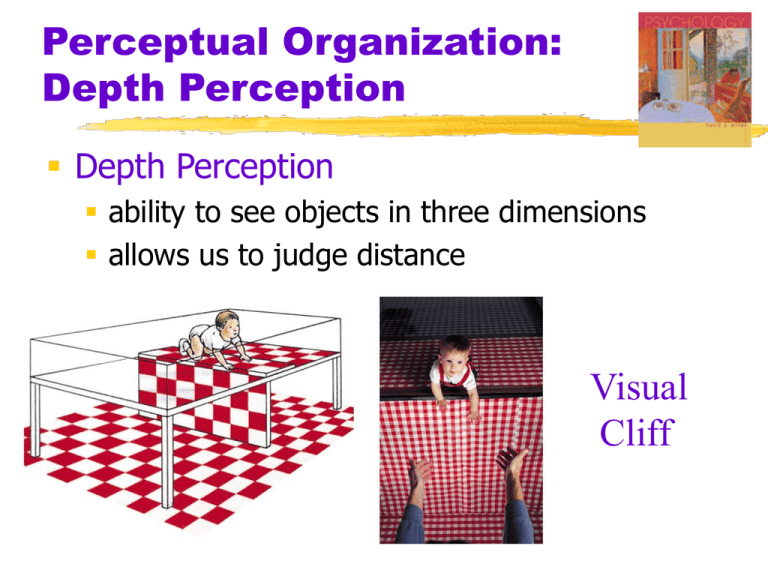
Perceptual Organization: Depth Perception Depth Perception ability to see objects in three dimensions allows us to judge distance Visual Cliff Depth Perception Binocular cues – depend on use of two eyes retinal disparity images from the two eyes differ closer the object, the larger the disparity Finger sausage example convergence neuromuscular cue two eyes move inward for near objects Perceptual Organization: Depth Perception Monocular Cues – eye alone depth cues available to either relative size smaller image is more distant interposition closer object blocks distant object relative clarity hazy object seen as more distant texture coarse --> close fine --> distant Perceptual Organization: Depth Perception Relative Size Relative Size Relative Size Perceptual Organization: Depth Perception Interposition Perceptual Organization: Depth Perception Monocular Cues (cont.) relative height higher objects seen as more distant relative motion closer objects seem to move faster linear perspective parallel lines converge with distance relative brightness closer objects appear brighter Perceptual Organization: Depth Perception Relative Height Perceptual Organization: Depth Perception Perspective Techniques Perceptual Organization: Depth Perception Light and Shadow In or out? Perceptual Organization: Depth Perception Illusory Depth Perceptual Organization: Depth Perception Phi Phenomenon – illusion of movement created when two or more adjacent lights blink on and off in quick succession How do movies work? Perceptual Constancy Perceptual Constancy perceiving objects as unchanging even as illumination and retinal image change color shape size Perceptual Organization Perceptual Organization: Depth Perception Illusory Depth Explanation Perceptual Organization: Muller-Lyer Illusion Cultural Experiences affects susceptibility to the Muller-Lyer illusion! Perceptual Organization: Size-Distance Relationship Perceptual OrganizationBrightness Contrast Perceptual OrganizationBrightness Contrast PerceptualOrganization: Grouping Principles Impossible doghouse Sensory Restriction: Blakemore & Cooper, 1970 Kittens raised without exposure to horizontal lines later had difficulty perceiving horizontal bars.



